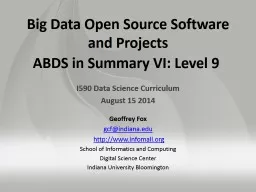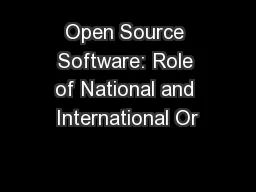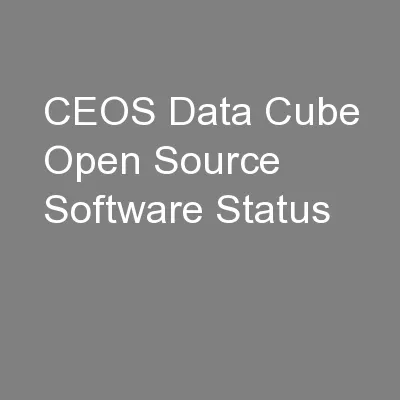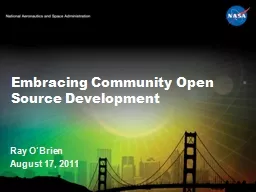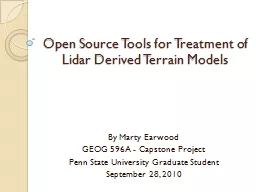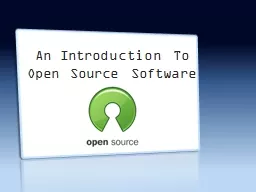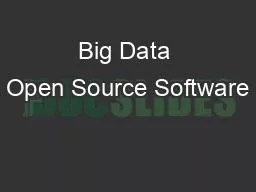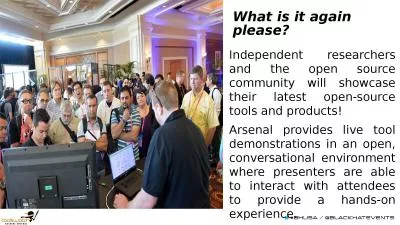PPT-Big Data Open Source Software
Author : marina-yarberry | Published Date : 2016-08-14
and Projects ABDS in Summary VI Level 9 I590 Data Science Curriculum August 15 2014 Geoffrey Fox gcfindianaedu httpwwwinfomallorg School of Informatics and
Presentation Embed Code
Download Presentation
Download Presentation The PPT/PDF document "Big Data Open Source Software" is the property of its rightful owner. Permission is granted to download and print the materials on this website for personal, non-commercial use only, and to display it on your personal computer provided you do not modify the materials and that you retain all copyright notices contained in the materials. By downloading content from our website, you accept the terms of this agreement.
Big Data Open Source Software: Transcript
Download Rules Of Document
"Big Data Open Source Software"The content belongs to its owner. You may download and print it for personal use, without modification, and keep all copyright notices. By downloading, you agree to these terms.
Related Documents

